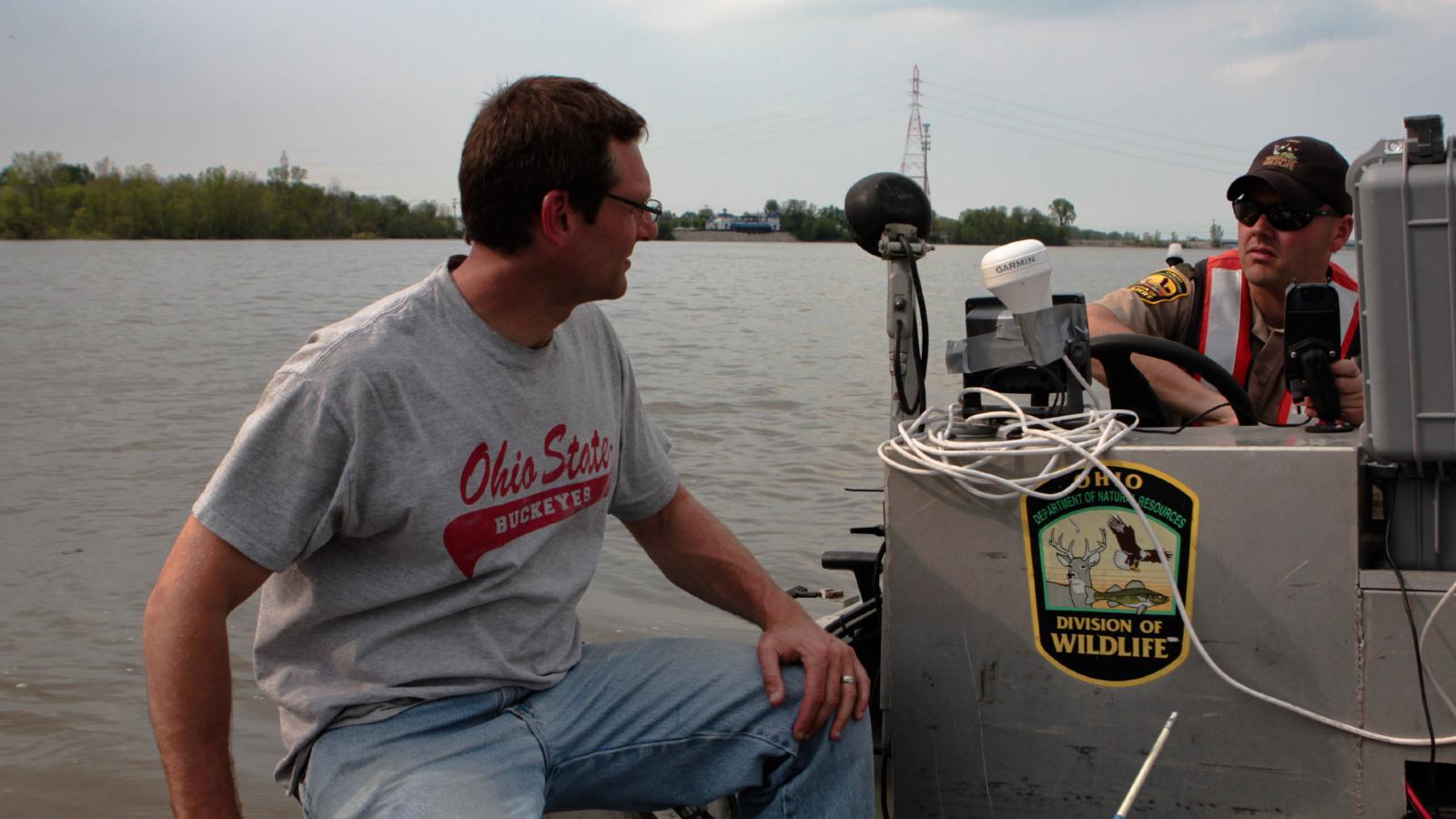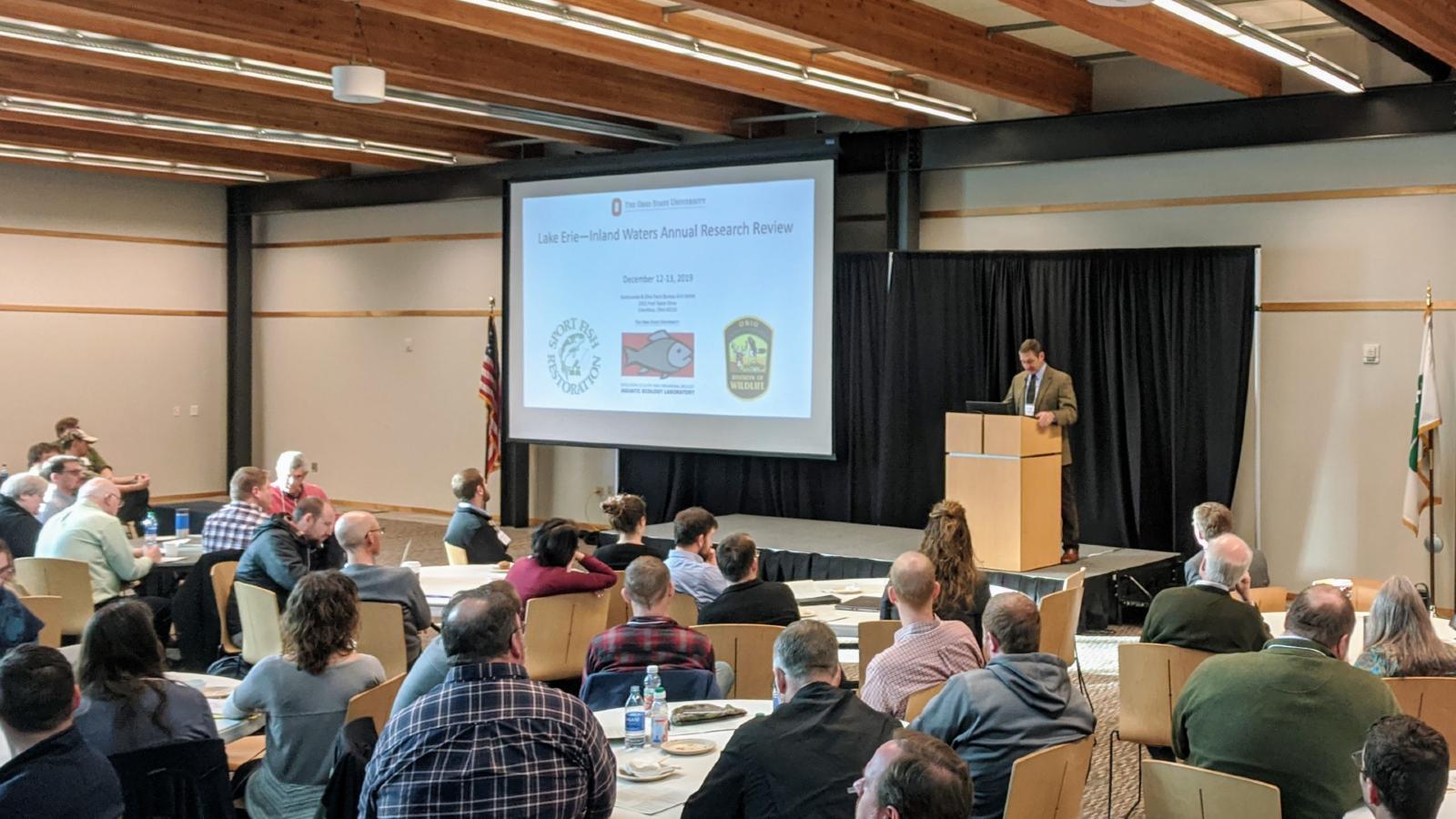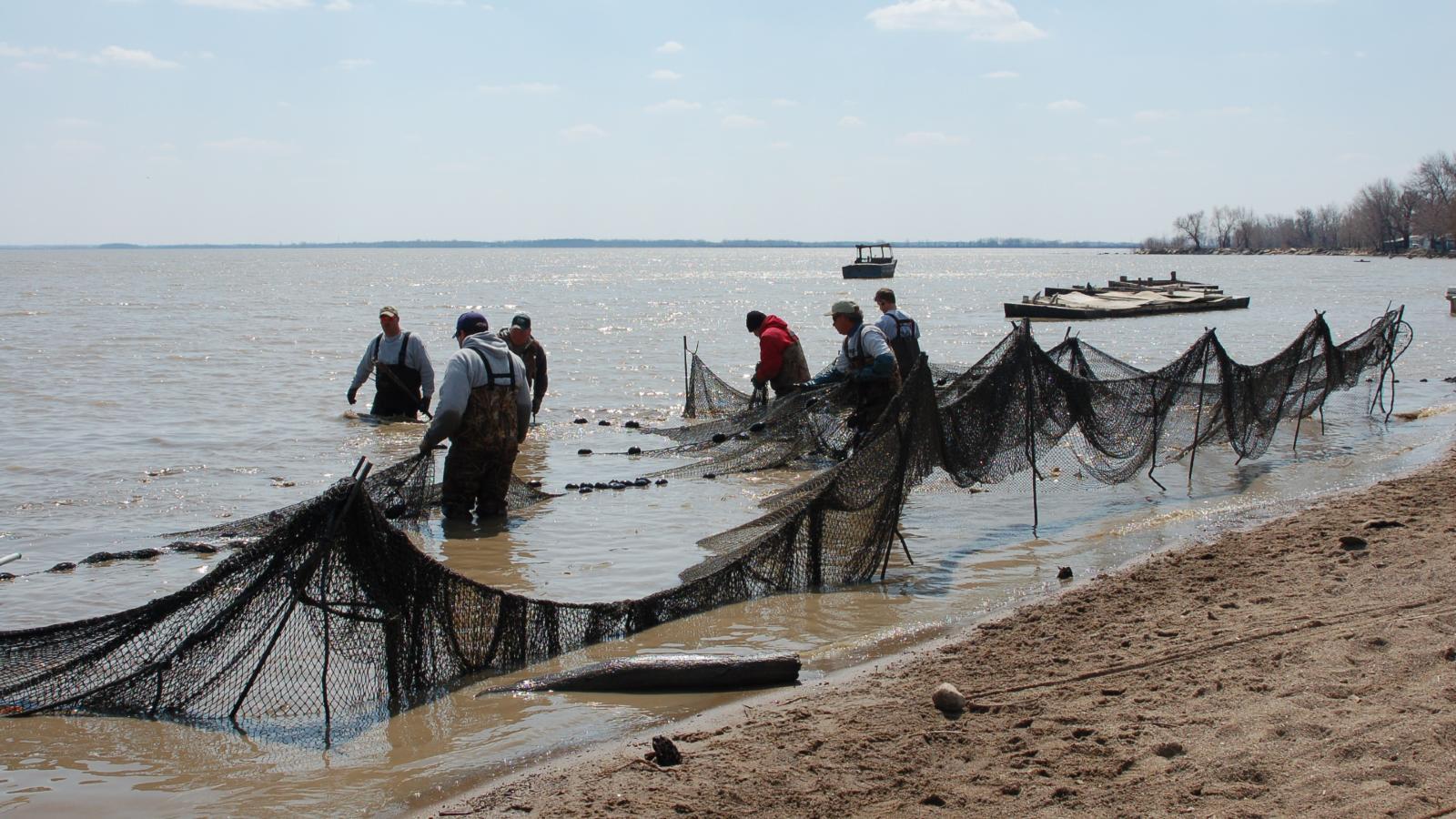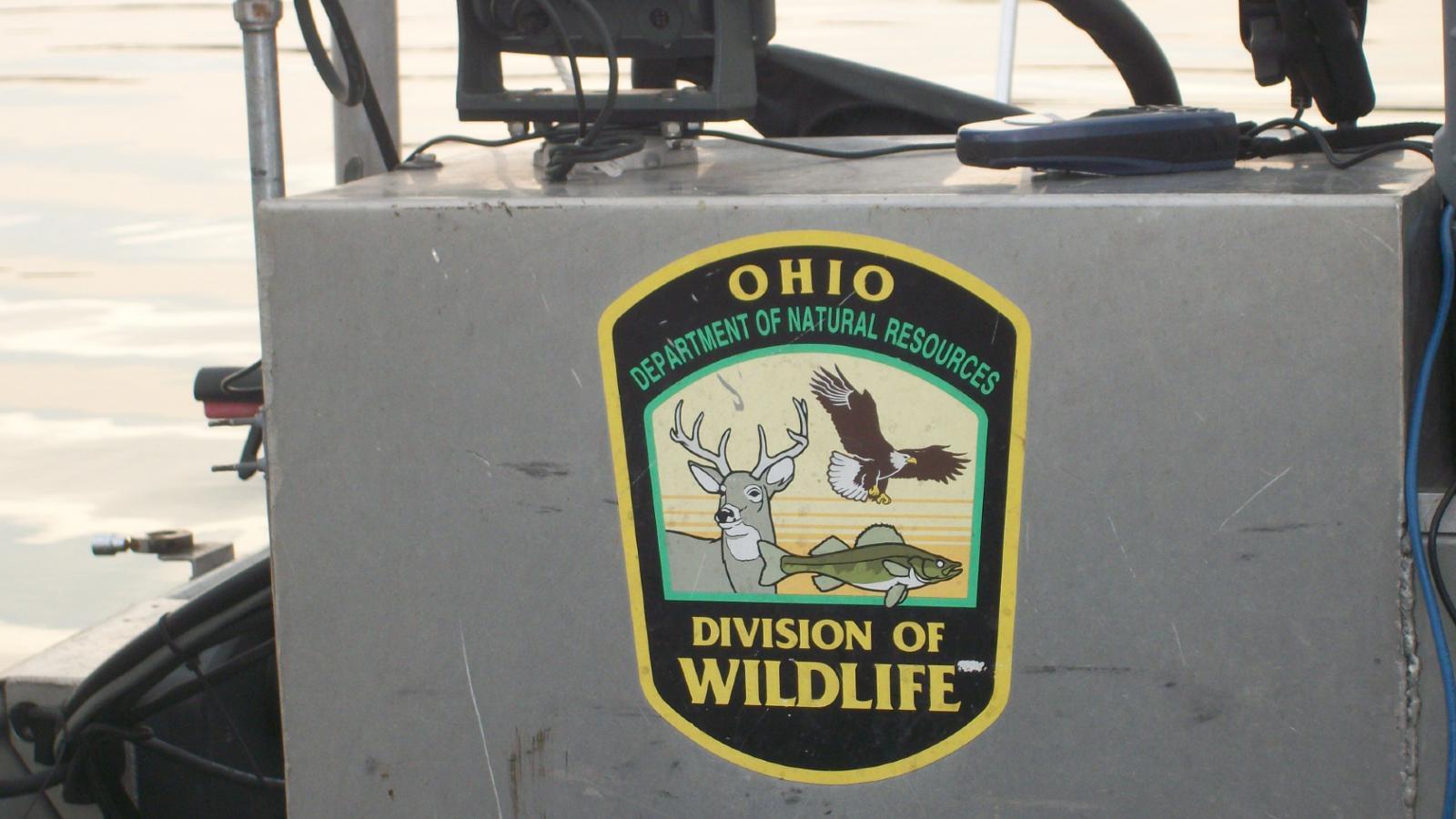Ohio Division of Wildlife Partnership
More than 30 years of partnership
The Aquatic Ecology Laboratory (AEL) holds a decades long partnership with the Ohio Department of Natural Resources, Ohio Division of Wildlife (DOW) in which our faculty, postdocs, and students work with DOW biologists and scientists to answer questions in fisheries ecology and conservation in Lake Erie and inland lakes and reservoirs throughout Ohio. Past and current research conducted under this partnership has also addressed problems in aquaculture/hatchery production, water quality, and ecosystem management. In these endeavors, we typically apply ideas from physiological, behavioral, population, community, and ecosystem ecology with a goal of developing solid principles upon which management decisions can be based.
Benefits of Collaboration
AEL researchers benefit from this partnership in several ways:
- Specific direct funding of research projects, including full Graduate Research Associateship and Post-doctoral support;
- Collection of data by DOW personnel in direct support of our research; and
- Access to numerous long-term fisheries assessments and water quality monitoring datasets for use in our research.
- As well as associated funding/support, including:
- administrative and technical staff support,
- research equipment, boats, and vehicles,
- research equipment manufacture, and repair,
- research facility construction and maintenance,
- travel to scientific meetings and professional/scientific workshops, and
- access to replicated hatchery ponds for experiments;
At present, the AEL receives $1.5 million annually to support the research that is conducted under this partnership. These dollars are provided by the Federal Aid in Sport Fish Restoration Program, administered jointly by the U.S. Fish and Wildlife Service and the Ohio DOW. Below, you can find a partial list of funded projects that were made possible through this excellent, long-standing collaboration.
Projects
Lake Erie
- Lake Erie walleye spawning ecology
- Climate change impacts on Great Lakes fishes
- Lower trophic-level impacts on fish recruitment
- Parental effects on early life stages of fish
- The influences of hydrodynamics, early growth, and larval movement on Lake Erie fish recruitment
- Meteorological effects on yellow perch reproduction and recruitment
- Role of biophysical coupling in walleye recruitment
- Understanding the importance of early life movement, growth, and survival to walleye recruitment in western Lake Erie
- Lake Erie walleye stock discrimination methods and applications
- Retrospective analysis of the causes and consequences of Lake Erie ecosystem change
Inland Lakes/Reservoirs
- Chaoborus and hypoxia effects on reservoir food webs and fisheries
- Classification of Ohio reservoirs based on lower trophic levels: implementing a watershed template
- Modeling assessment of habitat quality for Ohio reservoir sportfishes
- Ecosystem-based modeling evaluation of stocked predator introductions on reservoir food webs
- Largemouth bass recruitment as driven by habitat, hydrology, community, and spawning stock characteristics
- A bioenergetics-based evaluation of hybrid striped bass habitat quality in Ohio reservoirs
- Assessing biotic and abiotic mechanisms that influence survival and growth of stocked age-0 saugeye in Ohio reservoirs
- Improved reliability of fish production in rearing ponds





